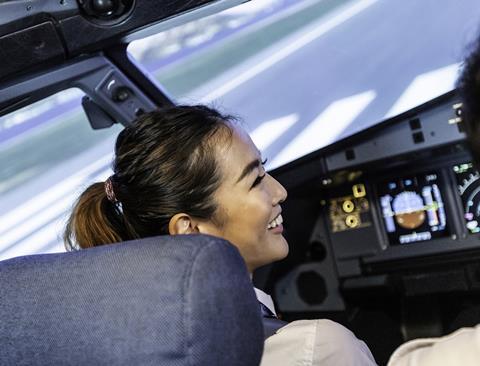Europe’s safety authority is aiming to reduce training dependency on full-flight simulators by implementing a classification system that enables selection of other flight-training devices that provide the appropriate level of capability.
The matter is the subject of a European Union Aviation Safety Agency proposal which, it says, contains an “innovative” matrix-based approach to categorising the capabilities of future flight-training equipment.
EASA says the proposal requires training providers to identify a “capability signature” based on assessing training task objectives against the features and fidelity levels of flight-simulation devices.
This is then matched with training devices available on the market having at least the same signature.
Such matching allows training providers to use the “most appropriate” devices, says EASA.
Through the filtering of criteria relating to features and fidelity level, it states, the system will allow more flexibility to obtain training credits by using devices other than a full-flight simulator.

“The need to change the rules arises from regulatory discrepancies and barriers that currently limit the possibility to obtain training credits by using other types of training devices,” says the proposal.
“Without this rule change, [full-flight simulators] will continue to dominate the training industry.”
This means alternative flight-training devices will continue to have “limited and unstandardised capabilities” while emerging technologies – such as virtual-reality and artificial intelligence, tailored to specific training needs – will not obtain credits for regulatory training.
EASA claims the measure will also improve “visibility” in regard to the capabilities of different flight-training devices, and establish a “clear link” between type-rating training, recurrent training, and the specifications of such devices.



















